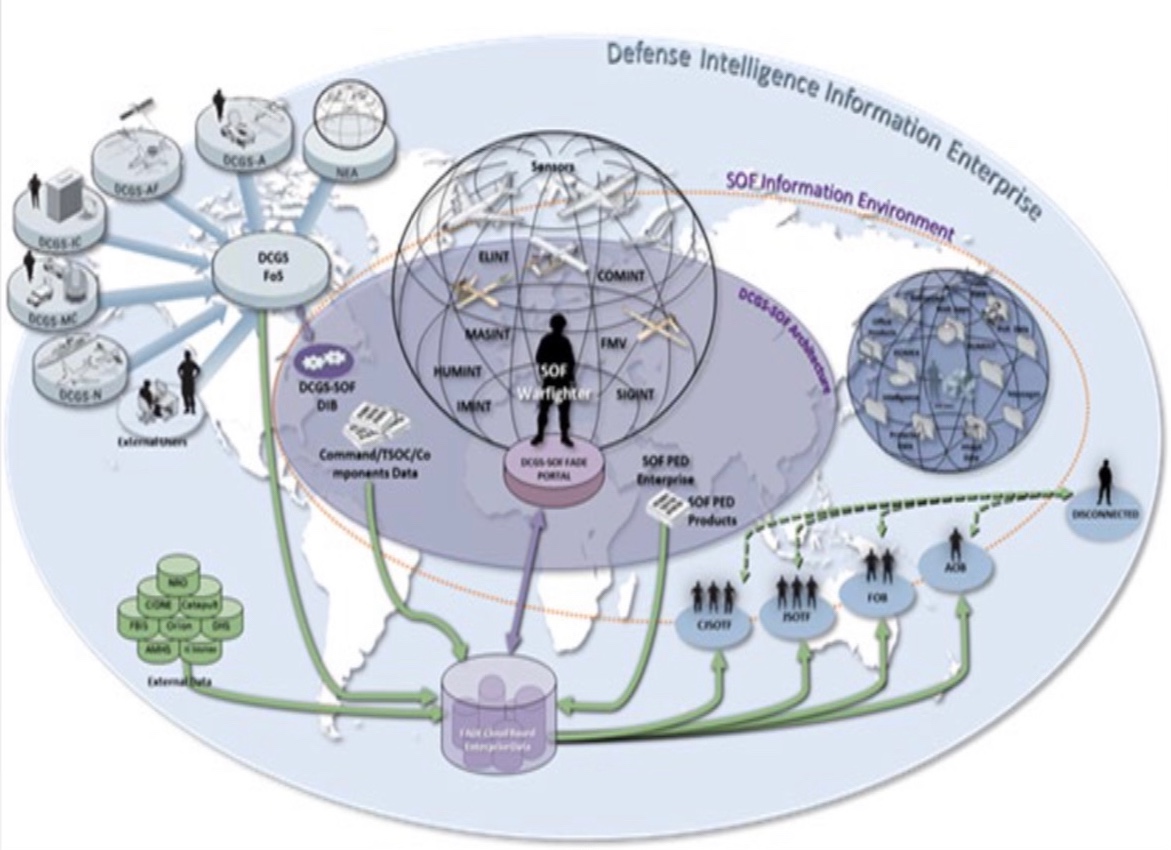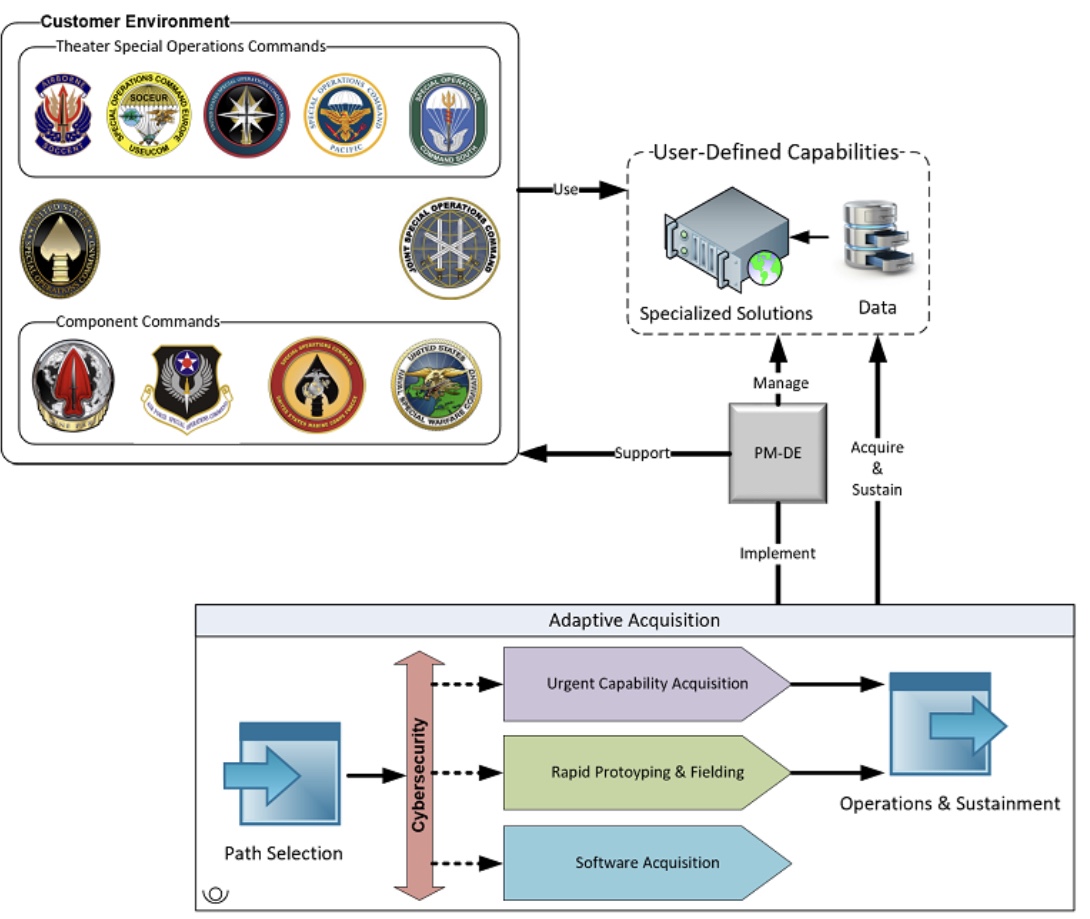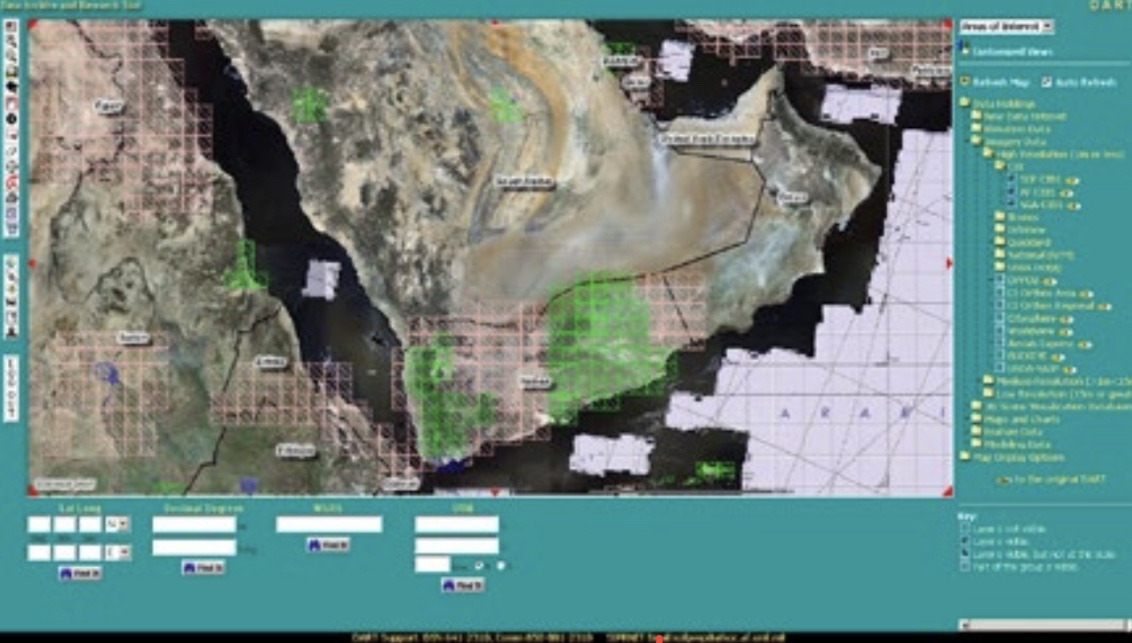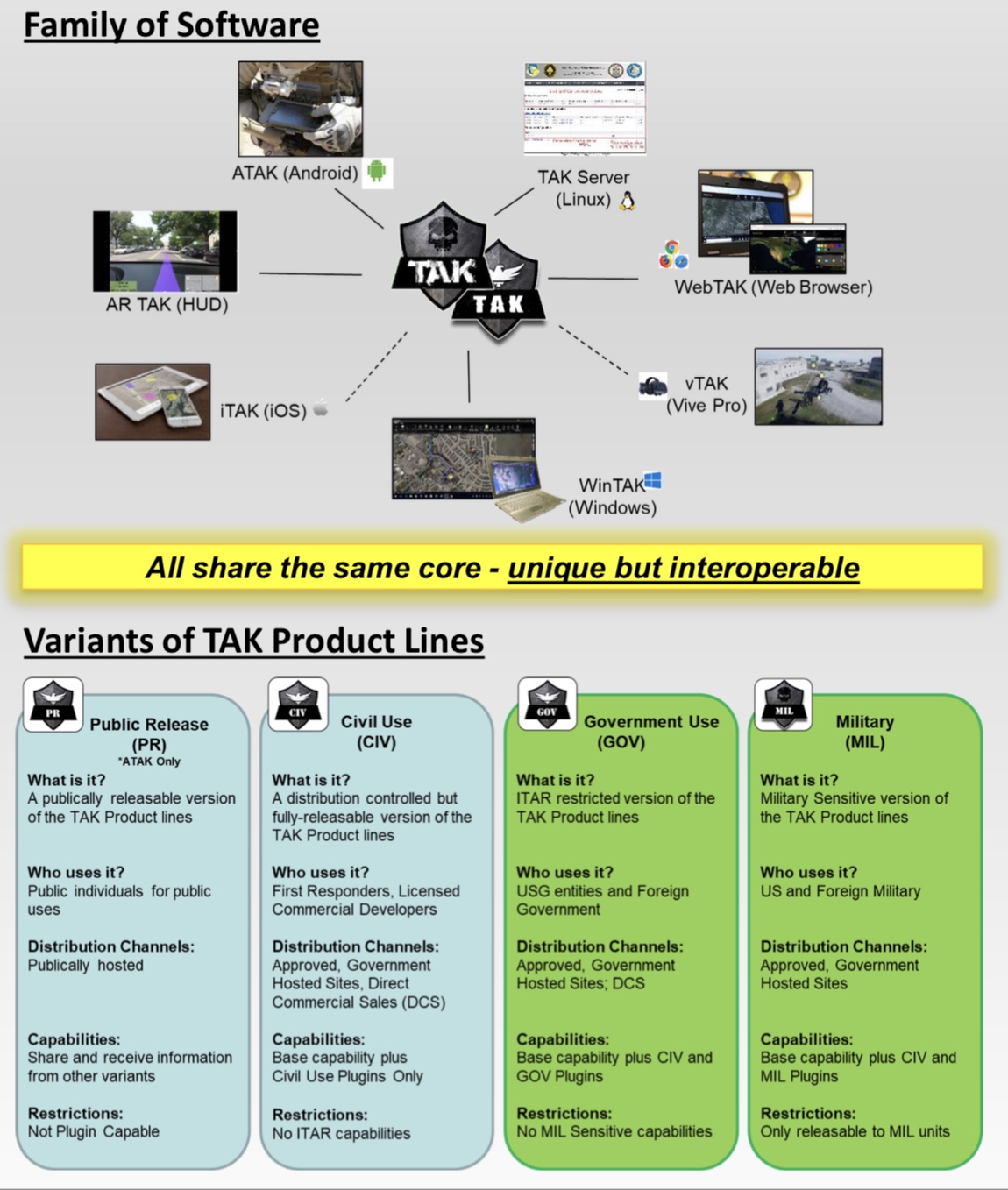Under the helm of COL Paul Weizer, USA, PEO-SOF Digital Applications serves as USSOCOM’s “One-Stop-Shop” for SOF software intensive digital applications. This new office was just announced during last year’s SOFIC and they’ve hit the ground running.
To set up this new PEO, they sought out “digital natives,” according to SOCOM’s Acquisition Executive Mr Jim Smith, who oversees all of the Command’s acquisition efforts. Bringing in the right talent, they assembled government personnel, contractors and so-called reimbursables, which are personnel who belong to outside organizations but accomplish work for SOCOM based on interdepartmental transfers of funds. That happened fairly quickly while they simultaneously looked at the Command’s acquisition portfolio to determine what exactly belonged in PEO-SDA.
They brought in programs that include Mission Command Systems, SOF Digital EcoSystem, Special Operations Mission Planning and Execution, and Tactical Assault Kit.

Mission Command Systems: Intelligence and Operations analytics systems that provide a unified SOF Common Intelligence Picture and Common Operating Picture (CIP/COP) and decision support to USSOCOM Commanders/Operators at all echelons. Delivers interoperability and integration required for synchronized SOF Global Situational Awareness. COL Weizer referred referred to this program as the, ” ring that binds them all.”

SOF Digital EcoSystem: Data Analytics Services and Tools

Special Operations Mission Planning and Execution: Mission planning & execution software tools (SOF Air, Ground & Maritime)

Tactical Assault Kit (TAK): Suite of Map-Based, Situational Awareness (SA) Software Applications across multiple platforms to include Android, iOS, Windows, Linux and HTML, that provides Tactical Capabilities for Military, Federal Government, and Civil 1st Responder operations
PEO-SDA has breathed new life into long-term programs such as mission prep which date back almost to the founding of USSOCOM. They look at the programs with a new set of eyes and move away from stovepipe approaches to capabilities to a more holistic operating environment.
With USSOCOM’s transition from looking at software as a component of a program to the glue that binds multiple capabilities together, they’ve taken charge of software development efforts on their own behalf rather than living with the software that comes on a system.
One of the challenges PEO-SDA is facing, is articulating what is “SOF Unique” about Software. This can be a sticking point of whether USSOCOM’s MFP-11 funds can be used to pay for a program. COL Weizer explained that use of and individual requirements for software can be SOF unique, but the code itself isn’t.
Even more challenging, is the lack of a current DevSecOps strategy which offers challenges when interfacing with other organizations within DoD and industry. However, it seems to be happening, if only because SOF personnel tend to get things done.
For those unfamiliar, DevSecOps is getting the developers, security and operators to work together from the outset of a software effort. Generally, it requires an integrated development environment.
The goal is to field new software every six months or faster. Although SOF are well known for their speed at fielding solutions, they have had to adapt to such an ambitious schedule. Already, they’re working with vendors to speed to integration of new SOMPE software from 18-24 months down to as little as four months. COL Weizer mentioned how the software acquisition pathway is adapting to commercial practices for development, which regularly rolls out software in support of their wares. Understandably, this faster process means that changes will become less substantial with incremental upgrades. Additionally, to mitigate configuration management issues across the enterprise which can come with frequent software updates, COL Weizer explained that his office is automating the process.
As part of instituting DevSecOps, the team has formalized a relationship with the user community, and Mr Smith tells us he is “most excited about the focus on the user,” which he went on to describe as, “a fanatical focus on the user.” Likewise, PEO SDA cuts across the entire SOF enterprise, including all of the other PEOs. Additionally, they look outside of the Command itself with customers at all of the SOF components as well as the Theater Special Operations Commands. In fact, they regularly utilize SOCCENT, co-located at MacDill AFB as a test element for new software before they release it to the field.
PEO-SDA has already made improvements on how quickly user software requirements are satisfied and it has only been a year.

